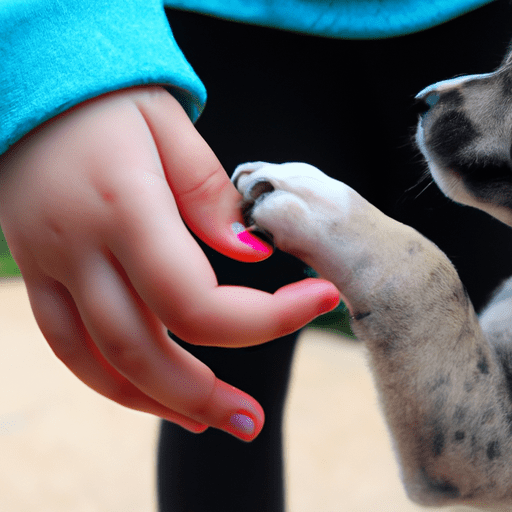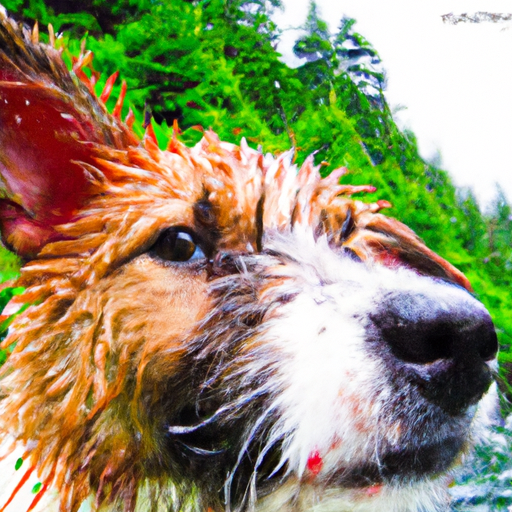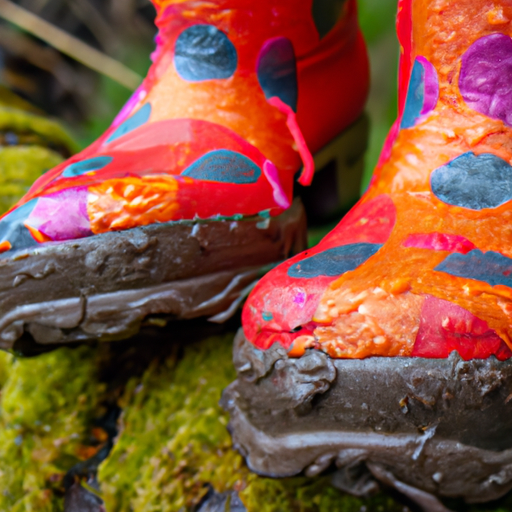So, you've just welcomed a new furry family member into your home – a delightful, playful puppy. Now, you're wondering how to ensure your little bundle of joy gets along famously with the children in your life. Well, fear not! In this article, we'll explore some of the most effective techniques for socializing your puppy with children, setting the stage for lifelong friendships and truly heartwarming moments. Let's dive right in!
Why is socializing a puppy with children important?
Socializing a puppy with children is incredibly important for several reasons. First and foremost, early socialization sets the foundation for a well-adjusted and confident dog. When puppies have positive experiences with children at a young age, they are more likely to grow up to be friendly and comfortable around people, including kids.
Additionally, teaching puppies to interact with children helps prevent behavioral issues later on. When they are exposed to children in a controlled and positive manner, puppies learn appropriate ways to behave around kids, such as not biting or jumping. This early training can greatly reduce the risk of future aggression or fear-based behaviors.
Finally, exposure to children helps puppies develop positive associations. By having pleasant experiences with children, puppies learn that kids are not a threat and can actually be a source of fun and enjoyment. This positive association will carry into adulthood, making the dog more comfortable and relaxed around children throughout its life.
Creating a positive environment for socialization
Creating a positive environment for socialization is crucial to ensure that your puppy has rewarding experiences with children. One way to do this is by familiarizing your puppy with the sounds and sights of children. You can play recordings of children laughing and talking, or simply take your puppy to places where kids frequent, such as parks.
To introduce your puppy to children in a controlled environment, it's helpful to find playdates or family gatherings where you can supervise the interactions. This allows you to monitor the puppy's behavior and ensure that both the puppy and the child feel comfortable and safe. Gradually increasing the complexity of the environment, such as introducing more children or different activities, can also help the puppy become accustomed to various situations.
Supervision is essential during all interactions between your puppy and children. A responsible adult should be present at all times to ensure the safety of both parties involved. This not only provides guidance and support for the puppy but also helps prevent any accidental harm that could occur.
Positive interactions with children
Teaching children the proper way to interact with puppies is key to fostering positive interactions. Children should be educated on how to approach and handle a puppy gently and calmly. It's important to emphasize that pulling on the puppy's ears or tail, as well as rough play, can be frightening and potentially harmful for the puppy.
Encouraging gentle handling from children is essential to create a positive experience for both the puppy and the child. Show children how to stroke the puppy gently and use a calm tone of voice when speaking to the puppy. This helps the puppy feel safe and relaxed, leading to a more enjoyable interaction.
Using positive reinforcement to reward calm behavior is another effective strategy. Teach children to offer treats or praise when the puppy is calm and well-behaved around them. This not only encourages the puppy to associate positive experiences with children but also reinforces the concept of appropriate behavior.
Gradual exposure
When socializing a puppy with children, it's important to start with brief and supervised introductions. This allows the puppy to become familiar with the presence of children without feeling overwhelmed or anxious. Over time, you can gradually increase the duration and intensity of interactions, extending the time spent with children and introducing more playful activities.
It is also beneficial to expose your puppy to a variety of children of different ages and sizes. This helps the puppy generalize its positive experiences and become comfortable around all kinds of children. By encountering various personalities, the puppy learns to adapt and become more adaptable and adaptable in social situations.
Providing structure and boundaries
Establishing rules for interaction between the puppy and children is crucial for creating a safe and harmonious environment. Teach children to respect the puppy's boundaries and avoid behaviors that may trigger fear or aggression, such as rough play or sudden movements. It's important to have clear, consistent guidelines for both children and puppies to follow.
Teaching the puppy basic commands and obedience is another way to provide structure and boundaries. This helps the puppy understand its role in the family dynamic and reinforces the hierarchy. By consistently practicing commands such as sit, stay, and leave it, the puppy learns to listen and respond to instructions, ensuring better control in situations involving children.
Using consistent discipline techniques is also essential for setting boundaries. Rewarding good behavior and redirecting unwanted behavior through positive reinforcement and gentle corrections helps the puppy understand what is expected of them. Consistency in discipline allows the puppy to understand the consequences of its actions and encourages positive behavior around children.
Socialization classes and groups
Enrolling your puppy in socialization classes specifically designed for dogs and children can be immensely beneficial. These classes provide a controlled environment where puppies can interact with both trained instructors and other children and dogs. Not only does this expose your puppy to different children, but it also allows them to practice appropriate behavior under the guidance of professionals.
Joining local puppy playgroups is another great way to expose your puppy to different children and dogs. These playgroups provide a fun and safe environment for puppies to socialize and learn from their peers. The presence of children in these groups helps puppies become accustomed to interacting with kids of different ages and temperaments.
Seeking guidance from professional trainers or behaviorists is highly recommended, especially if you encounter specific challenges or concerns during the socialization process. They can provide valuable insights and tailor training techniques to address any issues or fears your puppy may have, ensuring a successful and positive socialization experience.
Handling fear or anxiety
Recognizing signs of fear or anxiety in your puppy is crucial during the socialization process. Common signs include trembling, panting, cowering, or trying to escape. If you notice these signs, it's important to take gradual steps to desensitize your puppy to children. This can involve introducing the puppy to children from a safe distance and gradually decreasing the distance over time.
Patience and positive reinforcement are key when helping a fearful or anxious puppy overcome its fears. Rewarding calm and relaxed behavior around children with treats and praise can help the puppy build positive associations and gradually become more comfortable in their presence.
If fear or anxiety persists despite your best efforts, it's important to consult with a professional, such as a veterinarian or a certified dog trainer. They can provide further guidance and assistance in addressing and managing the specific fear or anxiety your puppy may be experiencing.
Helping children understand and respect boundaries
Educating children on proper handling and behavior around puppies is essential for creating a safe and enjoyable environment for both parties. Teach children to approach puppies calmly and ask for permission before petting or interacting with them. It's important for children to understand that puppies need their personal space and may become scared or defensive if boundaries are not respected.
Supervising interactions between children and puppies is vital to ensure the comfort and safety of both parties. This allows adults to intervene if necessary and redirect any inappropriate behavior by either the child or the puppy. By closely monitoring interactions, you can prevent any negative incidents and promote a positive and respectful relationship between the child and the puppy.
Addressing common challenges
Common challenges that may arise when socializing a puppy with children include puppy nipping or mouthing, jumping up on children, and teaching the puppy to be calm around them. These challenges can be addressed through consistent training and positive reinforcement.
For puppy nipping or mouthing, it's important to teach children and the puppy alternative behaviors for mouthing, such as offering appropriate chew toys. Additionally, redirecting the puppy's attention to a more appropriate activity and rewarding calm behavior can help discourage nipping.
Addressing jumping up on children can be achieved through consistent training and teaching the puppy an alternative behavior, such as sitting or offering a paw. Encouraging children to ignore the jumping and reward the puppy when it has all four paws on the ground helps reinforce the desired behavior.
Teaching the puppy to be calm around children can be accomplished through gradual exposure and positive reinforcement. Rewarding the puppy for calm behavior around children and providing ample opportunity for relaxation and rest can help the puppy associate children with tranquility.
Continued socialization throughout puppyhood
Socialization should not stop once the early puppy stage is over. It's important to regularly expose your puppy to children of different ages to maintain their comfort and positive associations. This can be achieved through interactions with friends or relatives, visiting parks or playgrounds, or participating in organized events for dogs and children.
Encouraging positive experiences with new children is also crucial. When your puppy encounters someone new, provide treats and praise when the puppy interacts calmly and politely, reinforcing the concept of positive associations with strangers. By continuously exposing the puppy to new experiences, you help them build confidence and adaptability.
Maintaining supervision and guidance as your puppy grows is just as important, if not more so, than during the early stages of socialization. As puppies become adolescent and adult dogs, they may encounter new challenges or be exposed to different stimuli. By being present, you can ensure their continued positive experiences with children and help them navigate any potential difficulties that may arise.
In conclusion, socializing a puppy with children is crucial for their overall well-being and development. By creating a positive environment, focusing on positive interactions, gradually exposing them to different situations, providing structure and boundaries, and seeking professional guidance when needed, you can help your puppy develop into a well-adjusted and confident dog that is comfortable around children. Remember, it's an ongoing process that requires patience, consistency, and lots of love and attention.






